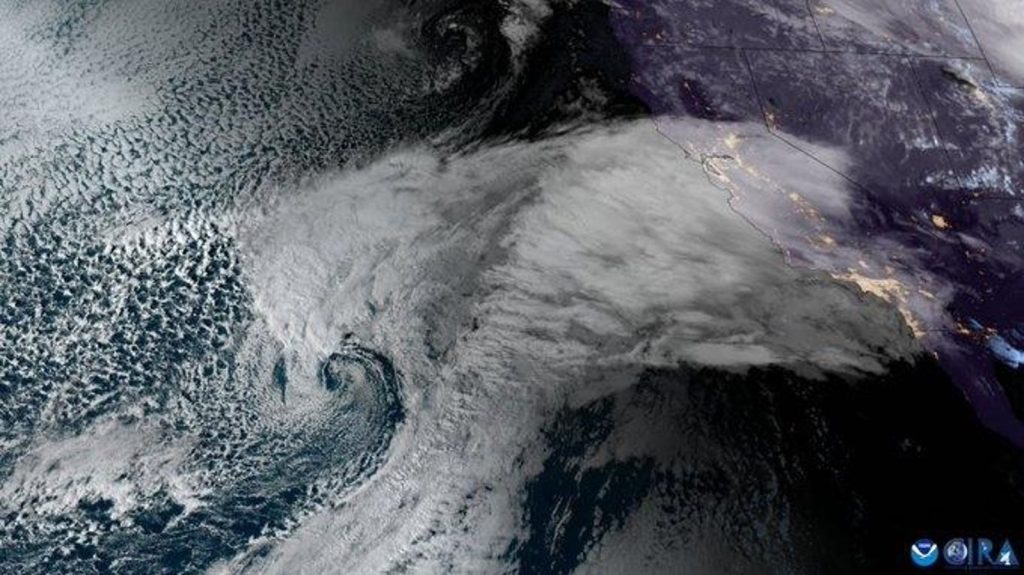When you see the National Weather Service use the following language, it should raise the level of concern. In a recent discussion post, my meteorologist colleagues in the Los Angeles office wrote, “All systems are go for one of the most dramatic weather days in recent memory.” Just yesterday, a friend called me asking about a storm approaching southern California. He was concerned about family there. The storm is associated with an atmospheric river, and there are certainly valid reasons for concern. Did you catch video of catastrophic flooding in San Diego in recent weeks? Here are four things that you need to know about the atmospheric river storm affecting California right now.
High Risk Of Threatening Flooding
The National Weather Service is not mixing words. The graphic above tells the story. This particular storm has the potentioal for dangerous and threatening flooding Sunday and Monday. In parts of southern California, the nation’s weather agency is calling for 3 to 6 inches of rainfall, with up to a foot in elevated terrain. Additionally, rainfall intensity will be a significant hazard (up to 1.5 inches per hour). When I see rainfall rates and totals like this, it triggers my weather senses to the likelihood of dangerous flooding, landslides, and other high risk outcomes.
Southern California is, in some ways, a vulenerable recipe for flooding and landslides. It is a very urbanized, highly populated region with expansive impervious surfaces and a signifant landscape of mountains or foothills. In addition to flooding, the storm will also bring snow levels down to around 4000 feet in mountainous terrain.
The Storm Is Not Only An Atmospheric River
The headlines focus on atmospheric rivers, Pineapple Expresses, and so on. The atmospheric river is a key element, but it is important to paint the full meteorological picture. The National Weather Service Los Angeles Office discussion issued Sunday morning says, “Latest satellite imagery shows a very well developed high power storm system (995 mb 250 miles to the west of Santa Maria) with a well defined cold and warm fronts. PWATs assoc with this system range from about .75 inches ahead of the system and an impressively wide swath of 1.15 inches within the warm front.” The interpretation of the meteorological jargon is simple. This is a pretty potent storm system with sufficient moisture and ample lifting mechanisms.
Atmospheric Rivers Can Carry A Lot Of Moisture
What about the atmospheric river? As I wrote previously in Forbes, atmospheric rivers are often mischaracterized in the media as “’firehoses, plumes or funnels’ of rainfall.” However, they are actually long, narrow regions of water vapor (gas phase) being transported from the tropics. The National Oceanic and Atmospheric Administration website points out that, “When the atmospheric rivers make landfall, they often release this water vapor in the form of rain or snow….strongest ARs can transport as much as 15 times the average flow of the water coming out of the mouth of the Mississippi River.” In the current case, the water vapor in the atmospheric river is interacting with the storm system and orographic lift caused by mountains.
A Role For El Niño?
The atmospheric river event is likely a Category 3 event (on a scale of 1 to 5), according to The Center for Western Weather and Water Extremes and as reported by The Washington Post. The event has the potential to be historic, according to weather and climae expert Daniel Swain, when you look at the strength of the low pressure system, winds, and water vapor. Because of the potency of the low, there is also a significant wind threat with this storm.
By the way, new data from NOAA Climate Prediction Center confirms that the current El Niño event is one of the strongest on record. This “Super” El Niño event is likely impacting the storm event too. In an informative post thread on the platform X, Swain explained how anomalously wamer ocean temperatures near the Califorina coast and the North Pacific contribute to increased evaporation and more water vapor “fuel” for the rain storms.
Read the full article here





